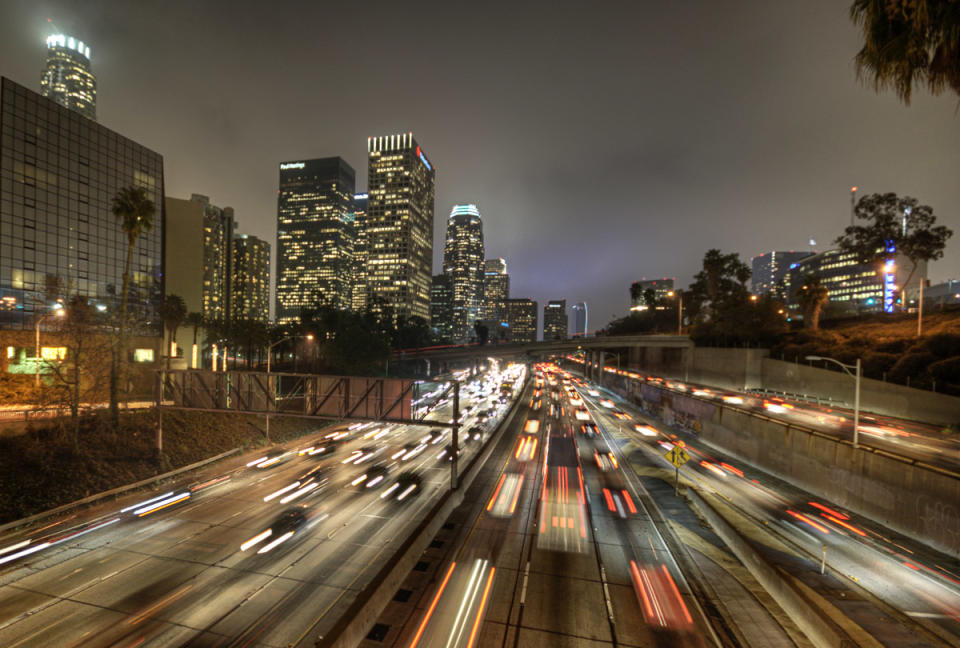8 ways new car and highway technology will change your life

MORE AT KIPLINGER.COM
Automakers are introducing mind-boggling technology that will see cars parking and driving themselves, leaving their "drivers" free to -- what else -- safely surf the Internet while on the move.
Earlier vehicular innovations "were all mechanical," says Egil Juliussen of iSuppli Corp., a market research firm specializing in automotive technology trends. Now, increasingly, they're digital and "happening in a shorter time frame," he says.
Smart cars could also be the key to winning back younger buyers -- the 20- and 30-somethings who are abandoning car ownership, no longer seeing it as a mark of independence and financial success. Their passion for technology, combined with greater driving convenience of autonomous cars, may draw them back.
Here's a peek at what's coming just a few years down the road.
Easier Parking
Hate to parallel park? No worries. Just let your car do it. Ford Motor Co., one of the leading innovators, is already taking the technology mainstream with its "active park assist." That's a fancy name for a system of electronic sensors that scans for suitable spaces, then handles the steering to back the car in without risk of a fender bender. The driver simply works the gas and brake pedals and shifts the transmission from reverse to drive to pull forward when the system gives the signal that the car is aligned properly.
Ford says that the next generation of active park assist will be able to handle perpendicular parking, too. Other automakers will follow with similar parking systems.

Fewer Accidents
Eventually, all new cars will come equipped with radar, cameras and other sensors to detect and avoid imminent crashes.
Early versions are already saving lives on models from manufacturers such as Ford, Volvo, Mercedes-Benz, Toyota and others. These systems recognize when vehicles ahead come to a sudden stop and apply the brakes if the car's driver fails to react in time. Future versions will take over accelerating and braking in stop-and-go traffic on congested highways.

More Help at Your Fingertips
Today's car buyers have grown accustomed to snazzy digital displays that let them control their stereos, dial their smart phones and access GPS navigation.
But there's more to come. Before long, vehicle infotainment systems will suggest alternative routes to avoid traffic snarls and alert drivers to available parking spaces at their destinations.
Mercedes' latest system, called Mbrace2, will let drivers pull up a picture of their destination from Google Street View — handy when traveling somewhere you haven't been before. It debuts in 2013 models.
Ford is even working on "biometric stress detectors" to measure a driver's vital signs, such as pulse and breathing rate. They'll determine whether a driver is too preoccupied with challenging road conditions to listen to a text or make a phone call, and accordingly allow or block such electronic distractions.

Hands-Free Driving
Sometime during the next decade, look for cars to drive themselves, at least some of the time. It sounds far-fetched, but automakers and engineers are proving they can pull it off. Note that tech giant Google already operates driverless cars -- modified Toyota Prius hybrids -- on the roads around its corporate headquarters in California. In more than two years, the cars have clocked tens of thousands of accident-free miles.
The next wave of in-car Internet technology will also go a long way toward addressing concerns about drivers' loss of attentiveness while monitoring Twitter and Facebook in their cars. Wi-Fi will enable future cars to communicate with one another, signaling their locations, speeds and projected paths.
Combined with increasingly sophisticated electronic driving aids, car-to-car communications will allow autos to take over more and more functions, freeing drivers to talk, text and go online.

Drive-by Discounts from the Doughnut Shop
As more and more cars are connected to the Internet along with having the capability to signal their location and destination, marketers will gain a whole new way of reaching drivers with highly customized ads -- say a coupon for the doughnut shop you'll be passing in five minutes during your morning commute.
Bill Visnic, senior editor and longtime auto industry observer at Edmunds.com, muses that it could be like "Facebooking your travel plans," and savvy Web advertisers are sure to take advantage. It's no coincidence that Google, the biggest player in Web-based marketing, is branching out into driverless cars.

Faster Commutes, Less Traffic
Self-driving autos taking full advantage of car-to-car communications and electronic controls will trim travel times for road warriors of all sorts -- commuters, truckers, delivery drivers, etc. Employers will benefit, too: Heavy traffic wastes countless man-hours. In Los Angeles, for example, it eats up 56 hours per worker per year.
The combination of autonomous cars and wireless traffic management systems will route traffic more efficiently through congested urban areas and bottlenecks, improving fuel efficiency. And, there'll be less need to widen many roads.

Lower Car Insurance Premiums
The integration of self-driving cars and wireless traffic control systems promises dramatic increases in road safety, slashing the number of crashes and fatalities by up to 75% and spelling lower auto insurance premiums and fewer auto body repairs.
With fewer crashes, there'll be less need for heavy steel bodies to withstand accidents. Plus good news for older drivers: Safety overrides may keep them on the road longer.

Less Privacy
Of course, there'll be some downsides and obstacles to negotiate. For one thing, be prepared to give up even more privacy. Onboard computers will let the world know where you are every second of the way. Moreover, who'll control the Web data that drivers see?
Liability is another issue. If the car's driving when a crash occurs, is the carmaker responsible? Can governments make drivers cede control of vehicles at crowded junctions and other bottlenecks?
But on the whole, the technology's positives will far outweigh the negatives.

 Yahoo Autos
Yahoo Autos 
